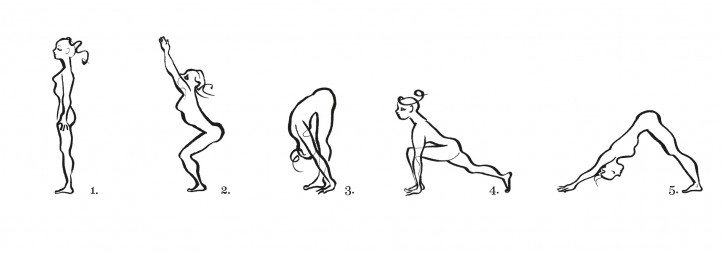
A Sun Salutation for the Stiff, the Unskilled, and the Skeptical
This set of exercises comes recommended by yoga practitioners as an easy way to wake up, while stretching the muscles. They can be done while still drowsy, staying in each position for thirty seconds or so, otherwise more energetically, changing positions in rhythm with the breath. You can also combine the two methods. At any rate, let’s begin with the dynamic version.

1. Stand up straight with feet shoulder-width apart, arms by your side, breathe deeply.
2. Inhale, bending your knees and raising your arms. Your back should be straight, pulling in your abdomen, stabilizing your spine. Bend your knees until you feel your calves stretch. The heels should be planted on the floor.
3. Exhale and lean forward. Bend








